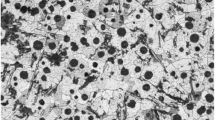Abstract
The bored hole quality is directly affected by the cutting vibrations in a boring operation. The aim of this study is to determine an optimum condition for the conicity of the bored hole (COBH) and deviation from circularity of the bored hole (DFC) by using the experimental design method. In this study, the effects of cutting parameters and boring tool material in relation to the overhang ratio of boring tool on both of the COBH and DFC quality criteria were examined experimentally. The optimal combination of test factors was determined by using the analysis of the signal to noise (S/N) ratio. Both the lower depth of cut values and the higher effective tool length lead to deterioration in the hole quality for both criteria. Besides, an increase in the depth of cut values as well as decreasing in the feed rate lead to quality improvement with regard to the COBH and DFC quality criteria.

Similar content being viewed by others
References
Yussefian N.Z., Moetakef-Imani B., El-Mounayri H.: The prediction of cutting force for boring process. Int. J. Mach. Tools Manuf. 48, 1387 (2008)
Taskesen A., Mendi F., Kisioglu Y., Kulekci M.K.: Deformation analysis of boring bars using analytical and finite element approaches. Strojniski vestnik J. Mech. Eng. 52(3), 161 (2006)
Moradi , H.; Bakhtiari-Nejad, F. , Movahhedy M.R.: Tunable vibration absorber design to suppress vibrations: an application in boring manufacturing process. J. Sound Vib. 318, 93 (2008)
Merrit H.E.: Theory of self-excited machine-tool chatter: contribution to machine-tool chatter research-1. Trans. ASME J. Eng. Ind. B 87(4), 447 (1965)
Nagano S.T., Koizumi T., Fujii T., Tsujiuchi N., Ueda H., Steel K.: Development of a composite boring bar. Compos. Struct. 38, 531 (1997)
Tewani S.G., Rouch K.E., Walcott B.L.: A study of cutting process stability of a boring bar with active dynamic absorber. Int. J. Mach. Tools Manuf. 35, 91 (1995)
Pratt, J.R.; Nahfey, A.H.: Active vibration control for chatter suppression. American Institute of Aeronautics and Astronautics, Inc., Reston, vol. 97–1210, p. 623 (1997)
Pratt J.R., Nahfey A.H.: Chatter control and stability analysis of a cantilever boring bar under regenerative cutting conditions. Phil. Trans. Roy. Soc. Lond. Part A 359, 759 (2001)
Tarng Y.S., Kao J.Y., Lee E.C.: Chatter suppressions in turning operations with a tuned vibration absorber. J. Mater. Process. Technol. 105, 55 (2000)
Sims N.D.: Vibration absorbers for chatter suppression: A new analytical tuning methodology. J. Sound Vib. 301, 592 (2000)
Lee E.C., Nian C.Y., Tarng Y.S.: Design of a dynamic vibration absorber against vibrations in turning operations. J. Mater. Process. Tech. 108, 278 (2001)
Arnold R.N.: The mechanism of tool vibration in cutting of steel. Proc. Inst. Mech. Eng. 154, 261 (1946)
Subramani, G.; Suvada, R.; Kapoor, S.G.; DeVor, R.G.; Meingast, W.: A model for the prediction of force system for cylinder boring process. In: Proceedings of the XV NAMRC (1987)
Kuster F.: Cutting dynamics and stability of boring bars. Ann. CIRP 39(1), 361 (1990)
Jayaram S., Iyer M.: An analytical model for prediction of chatter stability in boring. Trans. NAMRI/SME 28, 203 (2000)
Budak E., Ozlu E.: Analytical modeling of chatter stability in turning and boring operations: Part II experimental verification. J. Manuf. Sci. Eng. 129, 733 (2007)
Atabey F., Lazoglu I., Altintas Y.: Mechanics of boring processes Part-I. Int. J. Mach. Tools Manuf. 43, 463 (2003)
Grum J., Kisin M.: Influence of the microstructure on surface integrity in turning-Part-II: the influence of a microstructure of the workpiece material on cutting forces. Int. J. Mach. Tools Manuf. 43(15), 1545 (2003)
Grum J., Kisin M.: The influence of microstructure of three Al–Si alloys on cutting force amplitude during fine turning. Int. J. Mach. Manuf. 46(7/8), 769 (2006)
Mendi, F.: Takim Tezgahlari Teori ve Hesaplari (in Turkish). 72 TDFO Ltd.Sti. (1996)
Roy R.K.: A Primer on the Taguchi Method. Van Nostrand Reinhold, New York (1990)
Taguchi G.: Introduction to Quality Engineering. Asian Productivity Organization, Tokyo (1990)
Nalbant M., Gökkaya H., Sur G.: Application of Taguchi method in the optimization of cutting parameters for surface roughness in turning. Mater. Des. 28, 1379 (2007)
Abuelnaga A.M., El-Dardiry M.A.: Optimization methods for metal cutting. Int. J. Mach. Tool Des. Res. 24(1), 11 (1984)
Chryssolouris G., Guillot M.: A comparison of statistical and AI approaches to the selection of process parameters in intelligent machining. J. Eng. Ind. Trans. ASME 112, 122 (1990)
Chua M.S., Rahman M., Wong Y.S., Loh H.T.: Determination of optimal cutting conditions using design of experiments and optimization techniques. Int. J. Mach. Tools Manuf. 33(2), 297 (1993)
Yang W.H., Tarng Y.S.: Design optimization of cutting parameters for turning operations based on the Taguchi method. J. Mater. Proces. Tech. 84, 122 (1998)
Singh H., Kumar P.: Optimizing cutting force for turned parts by Taguchi’s parameter design approach. Indian J. Eng. Mater. Sci. 12, 97 (2005)
Korkut I., Kucuk Y.: Experimental analysis of the deviation from circularity of bored hole based on the Taguchi method. Strojniski Vestnik J. Mech. Eng. 56(5), 340 (2010)
Sandvik Coromant Catalogue. Metal Cutting Techical Guide-General Turning, A-22 (2007)
Author information
Authors and Affiliations
Corresponding author
Rights and permissions
About this article
Cite this article
Kucuk, Y., Korkut, I. Using the Experimental Design Method to Optimize the Conicity and Circularity of Bored Holes. Arab J Sci Eng 37, 1077–1082 (2012). https://doi.org/10.1007/s13369-012-0215-4
Received:
Accepted:
Published:
Issue Date:
DOI: https://doi.org/10.1007/s13369-012-0215-4




